- 1. Key Takeaways
- 2. Making a Hiking Checklist
- 3. Basic Day Hiking Checklist
- 3.1. Necessities and Emergency Gear
- 3.2. Tools and Equipment
- 3.3. Clothing and Footwear
- 3.4. Hygiene and Health
- 3.5. Navigation
- 3.6. Food and Drink
- 3.7. Basic Day Hiking Extras
- 4. What If You're Hiking Overnight
- 4.1. Overnight Hiking Gear
- 4.2. Cookware and Food
- 4.3. Hygiene and Protection
- 4.4. How to Go to the Bathroom in the Woods
- 4.5. Overnight Hiking Extras
- 5. Camping Activities And Games
- 5.1. Go On a Scavenger Hunt
- 5.2. Ball Games
- 5.3. Have a Water Balloon Fight
- 5.4. Hide-And-Seek
- 5.5. Card Games
- 5.6. Board Games
- 5.7. Charades
- 5.8. Tug-of-War
- 6. Tips for Planning Your Hiking Trip
- 7. Final Thoughts
- 8. FAQs
- 8.1. What not to take on a hike?
- 8.2. How do I prepare my body for a long hike?
- 8.3. What is the difference between hiking and trekking?
- 8.4. Is it OK to hike on an empty stomach?
- 8.5. What time of day is best to start a hike?
- 8.6. What are the 3 basic skills in hiking?
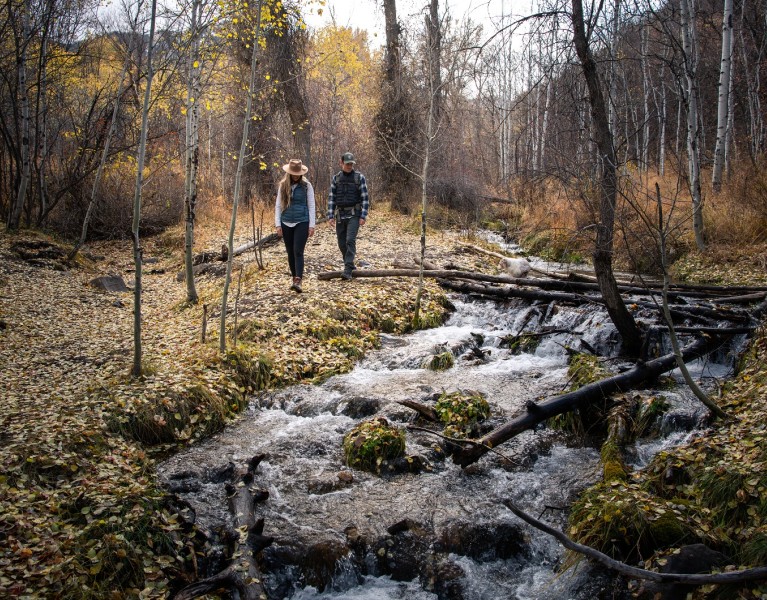
What to Bring On a Hike: The Ultimate Hiking Checklist
Table of Contents [Show]
Embarking on a hiking journey is not just an adventure; it's an exercise in meticulous planning. A well-crafted hiking checklist serves as your roadmap for what to pack for a hike, leading to a more enjoyable and worry-free experience. While it's tempting to pack for every possible scenario, the art of smart packing lies in balancing hiking essentials with items that are less crucial. Overpacking can be as detrimental as underpacking, both affecting your overall experience on the trail.
What to bring on a hike varies widely based on several factors: the type of trail, weather conditions, time of the year and even the terrain you'll be traversing. This comprehensive guide aims to be your go-to hiking essentials list, complete with optional items that are "nice to haves” while out on the trail. Whether you're a seasoned hiker or just starting out, this hiking packing list is designed to adapt to your specific needs, making your next outdoor expedition both fulfilling and memorable.
Key Takeaways
- Preparation is key: A well-thought-out hiking and camping checklist is your first step toward a safe and enjoyable adventure.
- Essential gear varies: Depending on the type of hike, season and duration, your hiking essentials list will differ.
- Safety first: Always prioritize hiking must-haves like first aid kits, navigation tools and emergency gear.
- Comfort and convenience: Additional items like hiking extras and overnight hiking gear can enhance your hiking experience.
- Plan ahead: From choosing the right hiking outfits for the season to selecting the best hiking gear, planning is crucial for a successful hike.
Making a Hiking Checklist
A hiking checklist is more than just a list of items to pack; it's a strategic plan that ensures you are well-prepared for your adventure into the wild. It serves as a guide that covers all the bases, from essential safety gear and navigation tools to food, clothing and optional comfort items. By following a well-thought-out checklist, you can avoid common pitfalls like forgetting essential hiking gear or overpacking unnecessary items.
Your hiking gear list acts as your safety net, helping you prepare for various scenarios you might encounter, whether it's a sudden change in weather, an unexpected injury, or navigational challenges; anything can happen. A checklist also allows you to tailor your gear to the specific type of hike you're planning, taking into account factors like duration, terrain and seasonal conditions. In essence, a hiking checklist is your roadmap to an overall better experience.
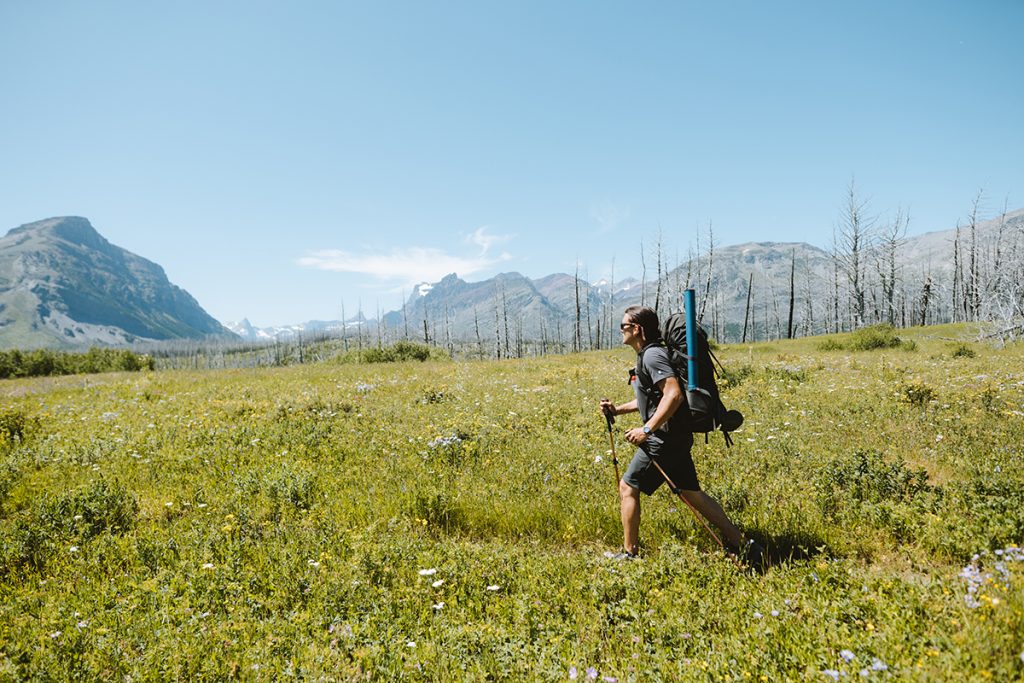
Basic Day Hiking Checklist
What to bring on a day hike shouldn’t be too complicated. Some solid hiking shoes, a backpack, water and some snacks should do it. But, there are a few items you may not have thought of. Here’s a list of day hiking essentials, or general things to bring hiking, that everyone should think of before taking a day trip.
Necessities and Emergency Gear
- First Aid Kit: A well-stocked first aid kit is a hiking essential for beginners and seasoned hikers alike. It should include bandages, antiseptics and pain relievers, among other items. For a more comprehensive list, you could review this first aid checklist.
- Water Bottle: Staying hydrated is key, especially during hikes when you don’t have easy access to water. A reusable, insulated water bottle is recommended to keep your water cool. Or, if you have the space, you could use a camelbak for easy access.
- Emergency Shelter: Even for a day hike, carrying a lightweight emergency shelter like a space blanket can be a lifesaver in unexpected situations.
- Sun Protection: A hat, sunglasses and sunscreen are essential for protecting yourself from harmful UV rays, especially during long hikes.
- Flashlight: Even if you plan to return before dark, a flashlight with extra batteries is a vital addition to your day hike packing list.
- Backpack: Of course you’ll need somewhere to put all this stuff. A comfortable backpack is a must have for all your hiking necessities. It doesn’t have to be a big pack though, something like a 25L pack works great for a day hike.
- Permits: Many places that you’d like to go hiking require day permits, so make sure you have what you need before you take off.
Tools and Equipment
Your hiking equipment list for a basic day hike should include a variety of items that can help you navigate the trail and handle minor repairs.
- Trekking Poles: These are particularly useful for longer hikes or uneven terrain, providing additional balance and reducing stress on your knees.
- Repair Kit: A basic repair kit with items like duct tape, safety pins and a multi-tool can be a lifesaver for fixing a torn backpack or broken shoelace.
- Knife: A good knife is one of the most versatile tools you can carry. Whether you need to cut a rope, prepare food or make emergency repairs, a multi-tool or Swiss Army knife is a must-have.
Clothing and Footwear
The right clothing and footwear can make a significant difference in your comfort and mobility on the trail. Here's what you should consider:
Spring/Summer
- Hiking Pants: Lightweight, moisture-wicking pants offer flexibility and comfort. They are a staple in men’s outdoor wear for hiking.
- Trail Runners: These shoes provide better grip and are generally lighter than traditional hiking boots, making them ideal for less rugged terrains.
- Long Sleeve Shirt: Opt for a breathable fabric that can protect you from the sun while keeping you cool.
- Additional Tips: For more specialized advice on summer hiking clothing, check out this guide on hiking outfits for summer.
Fall/Winter
- Rain Jacket: A waterproof yet breathable rain jacket is essential for protection against unpredictable weather. Check out this guide on outdoor clothing for more information.
- Extra Layers: Thermal underwear and a fleece jacket can provide the extra warmth you need when the temperature drops.
- Hiking Boots: Choose hiking boots that offer good ankle support and have a high-quality grip suitable for slippery or icy conditions.
- Wool Socks: Warm socks are some of the best things you can have out on the trail. It also doesn’t hurt to bring an extra pair just in case.
- Hat & Gloves: Hat and gloves will keep you warm in the winter months.
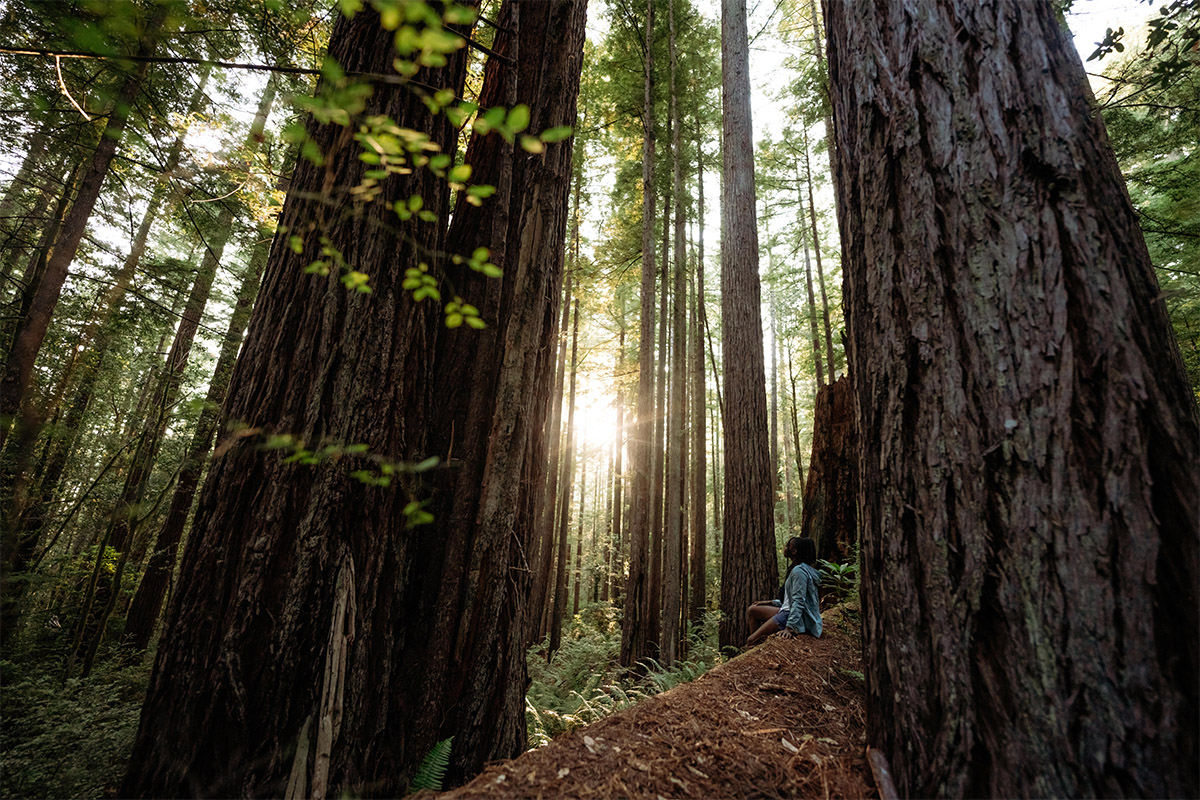
Hygiene and Health
Maintaining good hygiene and health is crucial when you're spending time outdoors. Here are some items to include in your hiking necessities:
- Hand Sanitizer: Compact and easy to carry, this helps you maintain cleanliness when washing facilities are not available.
- Toilet Paper: Biodegradable toilet paper is a responsible choice for maintaining hygiene while minimizing your environmental impact.
- Sunscreen: Protecting your skin from harmful UV rays is essential, especially during long hikes.
Navigation
Navigating through unfamiliar trails requires some basic tools. Here's what you should pack:
- Map and Compass: These are basic yet effective tools for hiking navigation. Always carry a physical map and compass as a backup to electronic devices.
- GPS App: Download a reliable GPS app on your smartphone as an additional navigation aid.
- GPS Device: In today's digital age, a GPS device is an invaluable hiking necessity. It offers real-time tracking and updates, making it easier to navigate unfamiliar trails.
Food and Drink
Keeping your energy level up is crucial during a hike. When it comes to food and drink ideas, here are some ideas for what to bring on a day hike:
- Energy Bars: Compact and packed with nutrients, these are a quick source of energy on the trail.
- Trail Mix: A combination of nuts, dried fruits, and perhaps some chocolate provides a balanced snack.
- Sandwich: Pack your favorite sandwich for something that’s a bit more filling than energy bars and trail mix. You may even want to pack for a picnic if you’re bringing the family with. Check out these picnic food ideas.
- Water: At least 2 liters of water is essential.
If you’re interested in learning more about how to dehydrate your own food, or what type of food to bring on a hike, give this hiking food article a read. Alternatively, you can also check out our guide on the best backpacking meals.
Basic Day Hiking Extras
Sometimes it's the little things that make a big difference. Here are some additional items to think about when you’re considering what to take hiking:
- Camera: Capture the beauty of the great outdoors with a lightweight camera or your smartphone.
- Notebook and Pen: Whether it's jotting down thoughts or sketching the landscape, a small notebook can be a nice addition.
- Insect Repellent: Particularly important in wooded or wet areas, an insect repellent can make your hike much more comfortable.
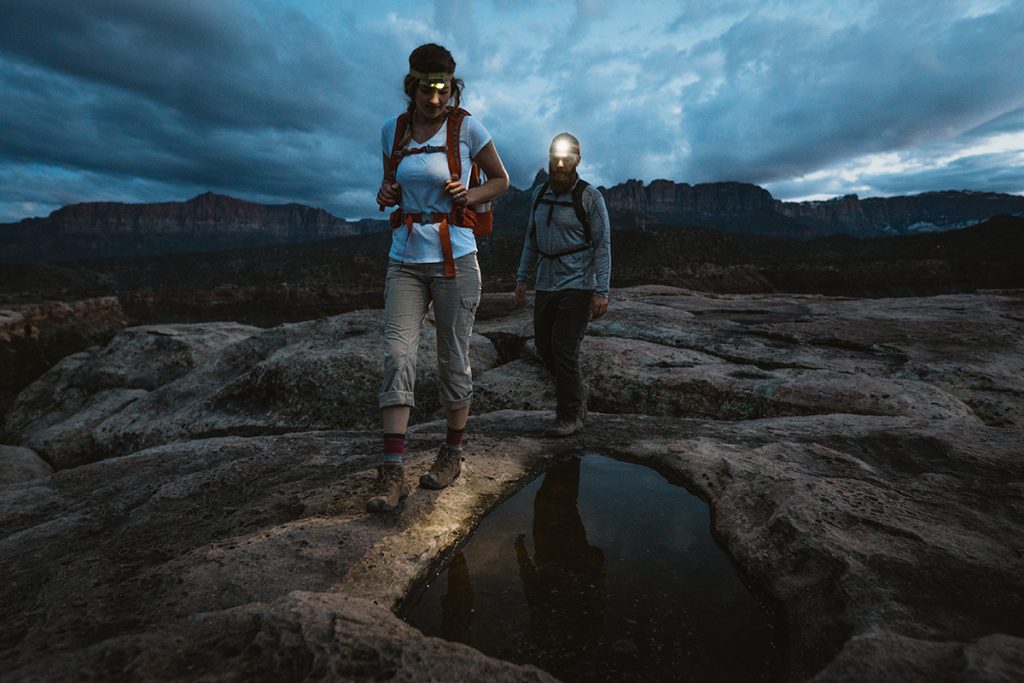
What If You're Hiking Overnight
Overnight hiking trips require additional planning and gear compared to day hikes. The essentials remain the same, but you'll need to consider extra things to take hiking if you plan on camping, cooking and spending extended periods of time in the forest.
Overnight Hiking Gear
When you're planning to spend the night outdoors, some additional hiking supplies become essential:
- Tent: A lightweight, weather-appropriate tent is crucial for shelter. Make sure it's easy to set up and take down.
- Sleeping Bag: Depending on the season, you'll need a sleeping bag that offers the right level of insulation.
- Sleeping Pad: This provides an extra layer between you and the ground, offering both comfort and warmth.
- Headlamp: More versatile than a flashlight, a headlamp allows you to have both hands free, which is particularly useful when setting up camp in the dark.
- Microfiber towel: A quick-drying towel, or even a bandana, will help you out in multiple situations.
- Rope: Having rope, or paracord on you is crucial. You may need this for shelter, or as a way to hang your food in the trees away from bears.
Cookware and Food
Cooking in the great outdoors requires some specialized gear and food items:
- Portable Stove: A lightweight, easy-to-use stove is essential for cooking hot meals.
- Cooking Utensils: A portable cooking set that includes a pot, pan, and utensils is a must-have for preparing easy camping meals.
- Non-Perishable Food: Items like canned beans, pasta, and dehydrated meals are ideal as they have a long shelf life. Here's more on camping food storage, if you want to learn some prepper tips.
Hygiene and Protection
Extended time outdoors means you'll need to take extra precautions for hygiene and protection. Here are some additional things to take on a hike if you plan on spending the night.
- Biodegradable Soap: This is essential for washing dishes and yourself, and it's eco-friendly.
- Toothbrush and Toothpaste: Don't forget about oral hygiene; a travel-sized toothbrush and toothpaste are sufficient.
- Bear Spray: In areas where you might encounter wildlife, bear spray is a safety must-have.
- Emergency Whistle: This can be a lifesaver in situations where you need to signal for help.
How to Go to the Bathroom in the Woods
When nature calls out in nature, it's crucial to be respectful of the environment. Here are some tips on how to go to the bathroom while hiking:
- Find a Secluded Spot: Make sure you're at least 200 feet away from any water source to prevent contamination. Look for a secluded area where you won't be easily seen.
- Dig a Hole: If you need to go number two, dig a hole at least 6-8 inches deep to bury your waste. A lightweight trowel can be handy for this.
- Use Biodegradable Toilet Paper: If you use toilet paper, make sure it's biodegradable and pack it out in a sealed plastic bag. Some hikers prefer to use natural materials like leaves or moss, but make sure they are safe to use.
- Pack Out Sanitary Products: If you're menstruating, make sure to pack out all sanitary products. Do not bury them as animals may dig them up.
- Hand Sanitizer: Always carry hand sanitizer and use it liberally after doing your business to maintain hygiene.
Overnight Hiking Extras
While the essentials are non-negotiable, here are some extras that can make your overnight hiking trip more enjoyable:
- Portable Charger: Keeping your devices charged can be crucial, especially if you're using them for navigation or emergencies.
- Lightweight Backpacking Chair: For those who prefer a bit more comfort around the campfire, a portable chair can be a welcome luxury. For a more detailed list of overnight hiking essentials, take a look at our backpacking checklist as well as our guide on ultralight backpacking.
- Star Chart: If you're hiking in a remote area, stargazing can be a magical experience. A star chart can help you identify constellations and planets.
- Book or Kindle: For some, there's nothing like enjoying a good book in the great outdoors.
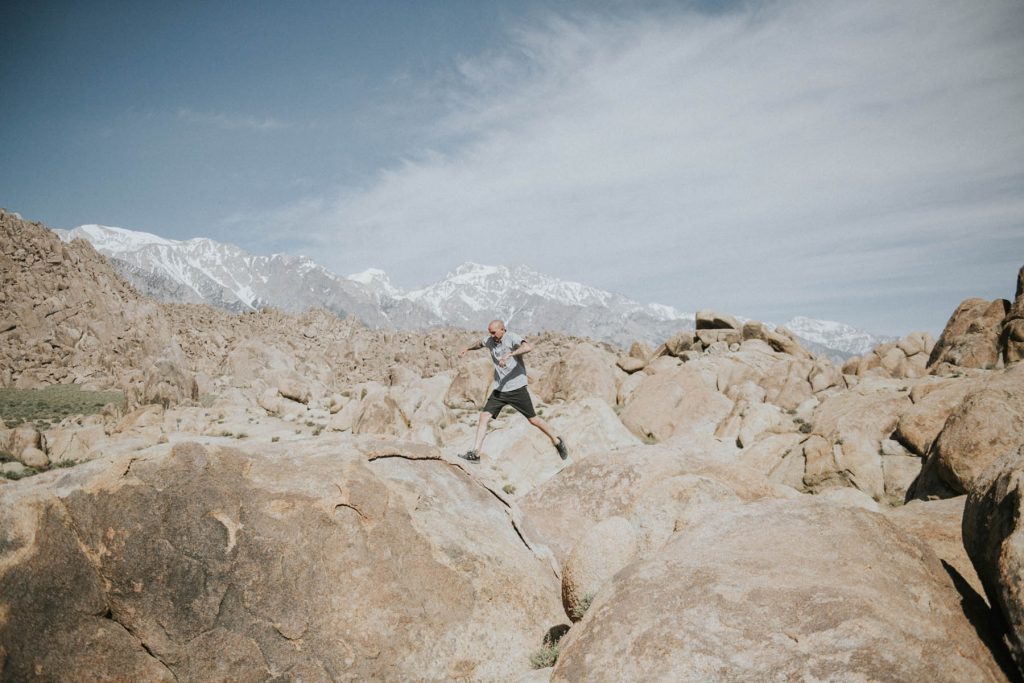
Camping Activities And Games
While camping, hiking isn’t the only way to enjoy the great outdoors. It's also an opportunity to have some fun and games. Here are some camping activities you can enjoy while out in nature:
Go On a Scavenger Hunt
A scavenger hunt is a fantastic way to explore your surroundings while having fun. Create a list of items or landmarks to find around the campsite or along the trail. This can be an enjoyable and educational activity for kids and adults alike. You can even add a competitive element by timing each team or individual.
Ball Games
Simple ball games like catch, soccer or even a mini-game of basketball can be a great way to unwind and enjoy some physical activity. All you need is an open space and a suitable ball. These games are not only fun but also a good way to get some exercise during your camping trip.
Have a Water Balloon Fight
If you're camping near a water source and the weather is warm, a water balloon fight can be a refreshing and entertaining activity. Make sure to use biodegradable balloons to minimize environmental impact. This game is best suited for a hot day and can be a fantastic way to cool off and have some laughs.
Hide-And-Seek
Hide-and-seek is a classic game that takes on a whole new dimension when played in the great outdoors. The natural landscape provides numerous hiding spots, making the game more challenging and exciting. However, it's crucial to set boundaries to keep everyone safe and within a designated area. Always make sure to check for any potential hazards in the area, like steep cliffs or bodies of water, before starting the game.
Card Games
Card games are a fantastic way to unwind after a day of hiking and exploring. Whether it's a simple game of Go Fish, a challenging round of Poker or a strategic game of Bridge, all you need is a deck of cards. A deck of cards is lightweight and easy to pack, making it a perfect addition to your overnight hiking extras.
Board Games
If you have room to pack them, board games can provide hours of entertainment. Opt for games that have fewer pieces to keep track of, like Connect Four or Tic-Tac-Toe. Some companies even produce travel-sized versions of popular board games, which are ideal for camping trips.
Charades
Charades is a game that requires no equipment and can be enjoyed by all ages. One person acts out a word or phrase without speaking, and the other players try to guess what it is. This game can be particularly fun around the campfire, and you can make it more interesting by choosing themes related to nature or camping.
Tug-of-War
Tug-of-war is a classic game that's as simple as it is fun. All you need is a sturdy rope and an open area. Divide into two teams and mark a line on the ground. The team that manages to pull the other across the line wins. It's a great way to engage in some friendly competition and get a little exercise at the same time.
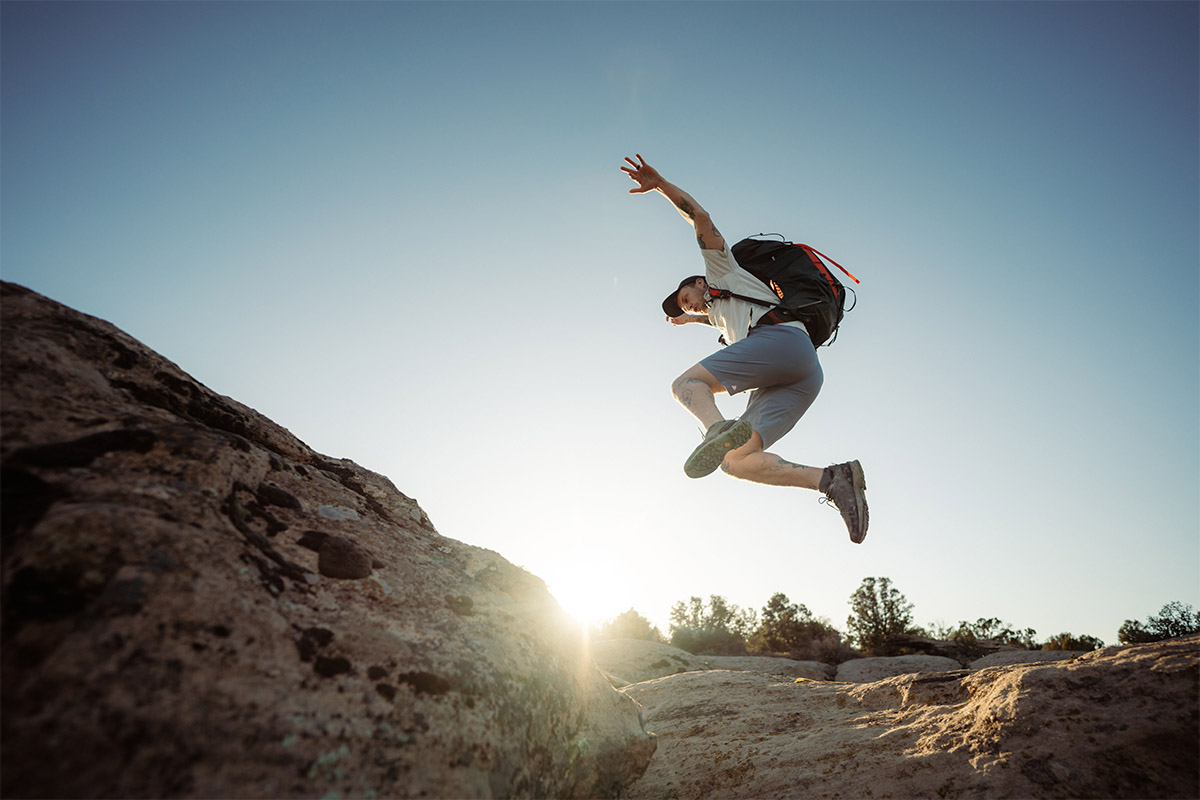
Tips for Planning Your Hiking Trip
Planning is the cornerstone of any successful hiking trip. Here are some tips to help you prepare when deciding what to bring hiking:
- Research the Trail: Before you set out, make sure you know the trail's length, difficulty and any potential hazards. This will help you decide what to pack for hiking and set realistic expectations.
- Check the Weather: Always check the weather forecast and prepare for sudden changes. This will influence your hiking essentials list and what you wear. If you're hiking in rainy conditions, here are some tips on rain gear you should take.
- Know Your Limits: Be realistic about your physical capabilities. If you're new to hiking, start with shorter, less challenging trails.
- Leave No Trace: Always follow the Leave No Trace principles to minimize your impact on the environment.
- Invest in Quality Gear: The best hiking gear and clothing can make a significant difference in your comfort and safety. For top-notch options, check out women's hiking clothing and men's outdoor wear.
Final Thoughts
Hiking is fun! It offers both physical and mental rewards while you get to enjoy the fresh air and beautiful scenery. Whether you're a seasoned hiker or a beginner, a well-thought-out hiking trip packing list is your best friend for any adventure. And just like every adventure into nature, remember whatever you pack in you should also pack out. Follow the Leave No Trace principles, respect the local wildlife and enjoy your travels.
FAQs
What not to take on a hike?
Now that we’ve covered things to bring on a hike, it’s a good idea to know what not to take on a hike: jeans, which are heavy and don't wick moisture, unnecessary electronics like laptops or iPads, excessive amounts of food and water. Pack according to the hike's length and difficulty.
How do I prepare my body for a long hike?
Preparing your body for a long hike involves a mix of cardio exercises and strength training. Start with regular cardio activities like jogging, cycling or swimming to build endurance. Complement this with strength training exercises that focus on your legs and core muscles. As you get closer to your hiking date, try some practice hikes that gradually increase in length and difficulty to acclimate your body to the hiking experience.
What is the difference between hiking and trekking?
While both hiking and trekking involve walking in natural environments, they differ in scope and requirements. Hiking generally refers to day walks on well-marked trails and is less strenuous. Trekking, on the other hand, is a multi-day activity that often involves more challenging terrain and requires a higher level of fitness and self-sufficiency, including carrying your own food, water, and shelter.
Is it OK to hike on an empty stomach?
Hiking on an empty stomach is not recommended. Your body needs fuel to function on a trail. Eating a balanced meal or snack before you hit the trail ensures you have the necessary energy to enjoy your adventure and tackle challenges. The proper food and beverage choices are important to think about when wondering what to take on a hike.
What time of day is best to start a hike?
Early morning is often considered the best time of day to start a hike. Trails are less crowded, allowing for a more peaceful experience. Additionally, temperatures are generally cooler, which is especially beneficial for strenuous hikes or when in hot climates. An early start also provides ample time to complete the hike and return before dark.
What are the 3 basic skills in hiking?
The three basic skills essential for hiking are navigation, first aid and basic survival skills. Navigation skills involve reading maps and using a compass or GPS to find your way. First aid skills include knowing how to treat minor injuries, blisters or insect bites. Basic survival skills encompass fire-making, finding water and signaling for help in emergencies.


